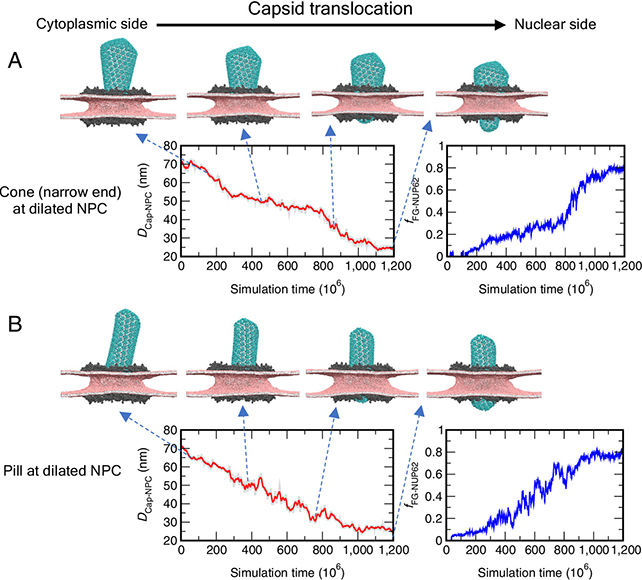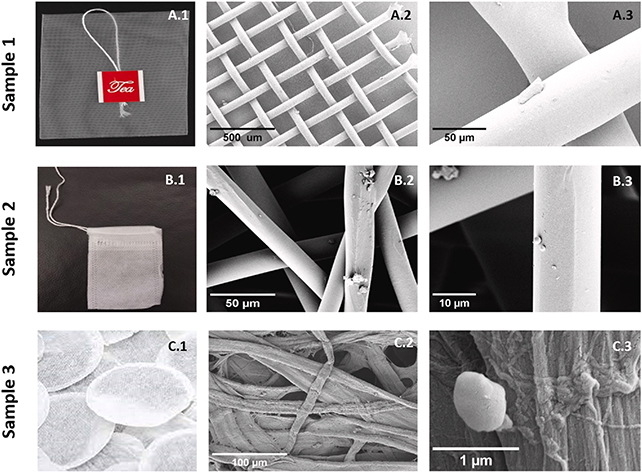Scientists have made a significant breakthrough in understanding how the Human Immunodeficiency Virus (HIV) penetrates the nucleus of a cell, allowing it to reproduce and spread. This process has long puzzled researchers, but a team from the University of Chicago has now shed light on it. The findings could enhance our comprehension of HIV and its effects on the body, potentially leading to improved treatments.
To uncover the mechanism by which HIV enters a cell nucleus, researchers conducted simulations involving thousands of proteins, focusing on the interaction between the HIV capsid (the virus’s container) and the cell’s nuclear pore complex (the gateway for genetic information exchange).
Numerous simulations were run to test cell interactions. The aqua pill-shaped object is a model of the HIV capsid, and the red and black objects are components of the nuclear pore complex. (Hudait and Voth, PNAS, 2024) “The nuclear pore complex is an incredible piece of machinery,” says theoretical chemist Gregory Voth from the University of Chicago. “It can’t let just anything into the nucleus of your cell, or you’d be in real trouble, but it’s got to let quite a bit of stuff in. Somehow, the HIV capsid has figured out how to sneak in.” The simulations disclosed that the HIV capsid initially wedge itself in, smallest end first, before utilizing an electrostatic ratchet. The researchers likened it to a seatbelt in a car, becoming progressively tighter. Another significant finding was that the flexibility and deformation of both the capsid and the pore are crucial in facilitating the capsid’s entry. The capsid undergoes changes in molecular order to accommodate the pressure, which may explain its cone-like shape.
Previously, it was uncertain whether the capsid remained intact while passing through the pore complex. Gaining a better understanding of this process will contribute to broader research on cell interactions, providing new insights into the mechanism of various substances entering the nucleus.
“I think this modeling also gives us a new way to understand how many things get into the nucleus, not just HIV,” says Voth. Although this is just one step in the infection process, it is vital for the sustainability of HIV in its host. Disrupting this mechanism would be a significant advance in the quest for a cure. The researchers propose several potential approaches to interrupt this sneaky ratcheting method, such as reducing the elasticity of the HIV capsid.
The study has been published in PNAS.
Revealed: How HIV Infiltrates Host Cell Nucleus















